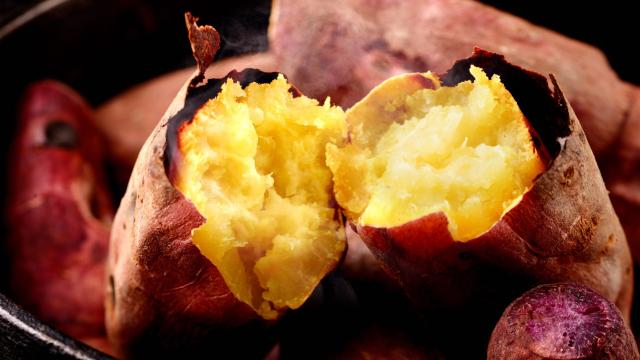Unlike white potatoes such as russets or Yukons, yams and sweet potatoes do not have skins that are pleasurable to eat. Instead of getting crispy, they get tough, with a texture somewhere in-between paper and leather. The insides, however, are quite delicious, and we have the skin to thank for that — it acts as a perfect roasting packet for the tuber’s fluffy interior, and it does its job best if you don’t pierce it before cooking.
Piercing a sweet potato lets steam and sugar escape while roasting, and you don’t want either of those things to happen. I’m sure you’ve roasted a pierced sweet potato, only to find streams of sticky stuff coating the outside, which is what I call “a waste”; that sticky sweet flavour belongs inside the potato (and eventually inside your mouth).
Neither is there a reason to give the steam an escape route by way of a few fork stabs. The potato will not rupture without one. In fact, I’ve found sweet potatoes cooked without being forked first are much easier to peel, post-roasting, as the steam pushes against the skin as it tries to escape, separating it from the flesh. Roasting a whole, un-punctured sweet potato in a hot oven — I’m talking 230 degrees Celsius for about an hour — results in a tender, fluffy potato with flimsy, papery, somewhat charred skin that flakes off in huge pieces with the gentlest of tugs.
It’s the lowest-effort, most effective sweet potato roasting method I’ve tried, is what I’m saying. I used it just last night. I took a whole, unwashed garnet yam, plunked it on small baking tray in a 230-degree oven, then walked away for an hour. Once it finished cooking, I sliced it in half to reveal a very noticeable gap (close to 1cm) between skin and potato. I pulled the skin off, cubed the potato, and ate it with some ramen noodles tossed in a little chilli oil. It was good. I’d do it again, and I recommend you try it too.

Leave a Reply
You must be logged in to post a comment.